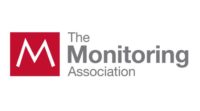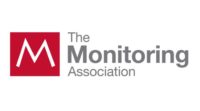Standards, Hiring, WFH Top List of Topics at TMA Virtual Annual Meeting

In a compromise with the lingering COVID-19 pandemic, The Monitoring Association (TMA) recently concluded its second virtual annual meeting, held Oct. 12-14. The free event, attended by almost 500 registrants, featured presentations by TMA members, industry thought leaders, and special guests, and provided the opportunity for attendees to take part in virtual education and networking events.
After hosting all of its events virtually in 2020, outgoing TMA President Don Young said that TMA event coordinators had tracked the 2021 COVID situation “day by day” before finally deciding to make the conference virtual once again this year, adding that the group planned to return to a live event by November 2022 in Marco Island, Fla.
Speakers and topics included keynote speaker Jennifer Scanlon, president and CEO of UL; a virtual “luau party” to introduce incoming TMA President Morgan Hertel; a presentation on consumer connectivity and its impact on the monitoring business by Elizabeth Parks, president of market research firm Parks Associates; a panel discussion of the implications of the work-from-home phenomenon on the industry; and a discussion of upcoming industry challenges and opportunities.
New UL Standard & More
In her keynote address, Scanlon discussed how the COVID-19 pandemic spurred UL to introduce dramatic changes to help shareholders, employees, and customers operate through the crisis. The pandemic, which struck four months into Scanlon’s new presidency, forced a reevaluation of UL’s core strengths and accelerated her previously announced organizational refresh strategy.
“We had a choice to make,” she said. “We chose to keep going on this important process. We were determined that this crisis would not be wasted and we’d come out stronger and ready to serve our customers.”
Scanlon and UL worked with the TMA task force to jointly establish emergency work-from-home (WFH) guidelines and introduce new revisions to UL 827, the Standard for Central Station Alarm Services, including emergency standards around WFH — “a reflection of our trusted partner status,” she said.
In response to the industry’s increased use of widely sourced data, UL is developing an alarm validation scoring initiative to help monitoring businesses provide better intelligence to first responders. Algorithms, artificial intelligence, and machine learning are all leading-edge tech tools businesses can leverage to help customers and attract investors and new members to the security industry, Scanlon said.
She added that supply chain and sustainability issues will play an increasingly important role for UL by , “helping our customers address the risks they may face, either through supply chain choices or through choices in how they can reuse and recycle what’s out there — key areas that connect back to our core business on life safety issues.”
Meet the New President
The virtual TMA conference gave attendees the opportunity to meet incoming TMA President Morgan Hertel, vice president of technology and innovation for Rapid Response Monitoring Services Inc.
A self-described “servant leader,” Hertel is committed to guiding rather than micromanaging his team, and will apply that approach to his work with TMA.
In his new role as TMA’s 36th president, Hertel plans to focus on four pillars to ensure TMA is positioned for future growth. These are:
- Structure. “An organization put together a long time ago can’t be the same organization today; it has to change,” Hertel said. “From Day 1, our long-range planning concept was to do that planning differently.” He is currently examining the structure of TMA’s boards, executive committee, and bylaws for relevancy.
- Technology. Because TMA members range from small centers with two seats with less than a thousand clients, to services like ADT with millions of accounts, technology is key to their success, and TMA’s job is to help its members understand how to leverage technology to improve business processes, Hertel said.
- Standards. Monitoring has always been a standards-based business and one of the most important things TMA needs to center on, continually creating new standards as new technologies develop, Hertel said.
- Education. TMA has a responsibility to continue providing ongoing, reasonably priced training and education to its members, whether the materials are built in-house or gleaned from other sources, he said.
When asked about the major challenges facing the security industry, Hertel placed talent recruitment and retention near the top of the list. “The biggest issue America faces today is staffing,” he said. “It’s hard to hire talent today at any level for any amount of money. If we’re going to continue to grow, we have to figure out how to recruit, grow, and mentor people.” With the cost of labor dramatically increasing to $15 an hour in many metropolitan areas, the monitoring industry will have difficulty competing with McDonald’s over the same wages, Hertel said. Job titles and the level of tech knowledge of workers will change, too, with the IT side of the business growing dramatically, he added.
The industry must also be careful to prevent commoditization, Hertel said. “We’ve got some work to do in working on creating value propositions, products and services, but I feel good about where we’re at today,” he added. “More cool new technology is coming to market, so we have a ways to go before running out of innovation. But we can’t become complacent because it’s not about price, but services, products, and personal relationships.”
In the future, Hertel predicts more public-private partnerships, the growing use of video megadata, and the huge WFH shift changing the way monitoring centers are structured. “The days of a receiver sitting at a desk are long gone,” he said. “Centers that want to continue must step up their game.”
The Impact of Connectivity
In a presentation on trends in consumer and business connectivity, Elizabeth Parks, president of market research and consulting firm Parks Associates, examined how new market dynamics such as remote work, school, entertainment, and healthcare — all enabled by broadband services and connectivity — are creating unprecedented opportunities for monthly revenue streams with support services like cybersecurity, parental control, and more.
The realities of COVID-19 created huge growth in home internet subscriptions and brought with it the need for higher uplink and downlink speeds and more stable connections. Operators faced new challenges in meeting this demand by installing customer provided equipment, handling customer support, and upgrading networks to meet the increased demand, Parks said.
These trends opened the door for more value-added services (VAS) such as home security monitoring and home control systems, identity theft protection, health service monitoring, parental controls, data management, and increased technical support. Seventy-eight percent of respondents to Parks’ research said at least one of a list of VAS were “valuable,” with at least 50 percent having at least one add-on service (the top three were support, anti-virus, and streaming video).
The increase in smart home devices is another trend providing an opportunity for add-on services, with 51 percent of respondents preferring an extended warranty for a smart home security device to be bundled with technical support services.
Parks also examined connectivity trends among small businesses, which comprise 99.9 percent of all U.S. businesses, creating 1.5 million jobs every year. Major shifts for these businesses involve adjusting to a distributed workforce, reaching and serving customers, and rethinking on-site businesses — all of which require robust connectivity.
Opportunities here involve servicing needs around staff turnover and onboarding, which require new IT solutions and services, Parks said.
The Challenge of WFH
In a panel discussion on the challenges and opportunities of the new world of work from home, speakers discussed the new UL standards and other topics. Panelists included Pamela Petrow, president and CEO, Vector Security; Nic Barrus, senior manager of operations, AvantGuard; and Steve Schmit, senior staff engineer, UL.
With the world and workplaces beginning to open up post-pandemic, earlier government-mandated emergency workplace guidelines may be obsolete, Schmit said. Last month, UL revised UL 27 to include WFH as an option under any conditions, meaning businesses can choose which standards to comply with for now. UL recommends that businesses still following WFH emergency protocol may want to freshen their documentation. “Some parts of the country are open for business, but there are uncertainties around workplace expectations,” Schmit said. “If you can’t rely on that governmental expectation anymore because of local conditions, you might want to look at new requirements to work from home without preconditions.”
Working from home presents a unique set of security risks involving remote connections, so UL is still promoting standards such as VPNs and encrypted connections as basic tech security, as well as requiring WFH operators to have duress signal capability. “The automation system must have a set of keystrokes enabling the operator to hit buttons and disconnect from the main automation system so an intruder won’t have access to the system and [that] would signal to the manager that there is a problem [and] to call police,” Schmit said.
Barrus said his company is treating WFH for its employees not as a right, but a privilege. With three monitoring centers and remote workers spread through those hubs, AvantGuard is onboarding new team members with the knowledge that they can transition to WFH after the first 90 days of employment at the central hub. “If they earn trust, then we’ll be following the UL guidelines to move them to remote and monitor their performance closely,” Barrus said.
Panelists agreed that while WFH is a viable option to in-person employment, remote training is a much bigger challenge, requiring intentionality and developing ways to engage new employees. This is especially critical for newcomers to the industry.
The Future of Security
In the TMA event’s final session, speakers addressed the industry’s future risks and opportunities.
Scott Harkins, vice president of sales and marketing for Resideo, noted that while the advent of the smartphone ushered in burglary and fire monitoring to connected homes, these basic services are still the primary services that security dealers offer. Being able to monitor big, expensive things in a home, such as plumbing and HVAC systems, will be the next iteration of whole-home monitoring.
With more sophisticated devices coming online, the industry will see an increased need for security of these devices, including process and data management challenges, said Daniel Kerzner, chief product officer at Alarm.com. This trend means monitoring businesses are all “data custodians” — not looking to monetize, but improve the customer experience, he explained. Because there are more opportunities for data to drift out of security or automation applications, the industry needs to clarify to the consumer where their data is going and how it’s being used.
Looking for a reprint of this article?
From high-res PDFs to custom plaques, order your copy today!






